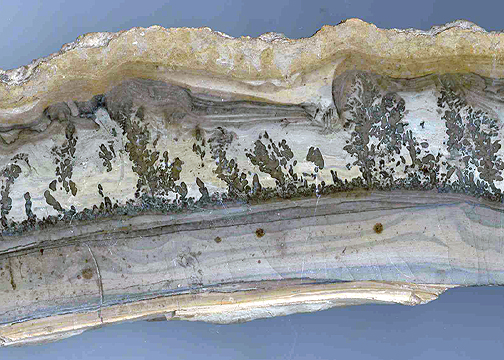Abstract
At the third congress of the I.P.S. (International Palaeoentomological Society) in Beijing (2010), Professor Dong Ren, conference organiser, was presented with an author’s copy of the arthropod volume of the Geological Conservation Review of Great Britain, which included fossil insects, and had just been published (Jarzembowski et al., 2010). The purpose of the review, which commenced in the last century before the founding of I.P.S., was essentially to select and document the key sites of British geology, geomorphology and palaeontology with view to geoheritage conservation—including palaeoentomology. The results were collated and published in a series of volumes and, as it subsequently transpired, the arthropod volume was the last one (number 35). The insect part (written by the current author) and other arthropods (by Derek Siveter and Paul Selden) were augmented by general geology and palaeontology contributed by Douglas Palmer. A planned volume with relevant Lower Cretaceous (Wealden) geology was eventually produced instead as a short series of papers by the Geologists’ Association of London (Radley & Allen, 2012b). Geoconservation has featured periodically on the I.P.S. agenda and this paper reflects on the legacy of the GCR study, a decade later, and over a generation after its initiation.
References
- Anderson, L.I. & Trewin, N.H. (2003) An Early Devonian arthropod fauna from the Windyfield chert, Aberdeenshire, Scotland. Palaeontology, 46, 467–509. https://doi.org/10.1111/1475-4983.00308
- Austen, P.A. & Batten, D.J. (2018) English Wealden fossils: an update. Proceedings of the Geologists’ Association, 129, 171–201. https://doi.org/10.1016/j.pgeola.2018.02.007
- Bechly, G. (2018) Chrismooreia michaelbehei gen. et sp. nov. (Insecta: Odonata: Asiopteridae), a new fossil damsel-dragonfly from the Early Jurassic of England. BIO-Complexity, 2018 (1), 1–10. https://doi.org/10.5048/BIO-C.2018.1
- Bone, D. (2013) The fossil beetles of Bognor Regis, West Sussex. Deposits, 34, 28–29.
- Coram, R.A. (2014) New insect fossils from the Lower Lias (Lower Jurassic) of West Dorset. Proceedings of the Dorset Archaeological & Natural History Society, 135, 181–188.
- Coram R.A. & Jepson, J.E. (2012) Fossil insects of the Purbeck Limestone Group of southern England. SIRI Scientific Press, Manchester, i + 143 pp.
- Fayers, S.R. & Trewin, N.H. (2005) A hexapod from the Early Devonian Windyfield chert, Rhynie, Scotland. Palaeontology, 48, 1117–1130. https://doi.org/10.1111/j.1475-4983.2005.00501.x
- Genise, J.F. (2016) Ichnoentomology. Springer, New York, xxviii + 695 pp. https://doi.org/10.1007/978-3-319-28210-7
- Haug, C. & Haug, J.T. (2017) The presumed oldest flying insect: more likely a myriapod? PeerJ, 5, e3402, 1–16. https://doi.org/10.7717/peerj.3402
- Hirst, S. & Maulik, S. (1926) On some arthropod remains from the Rhynie chert (Old Red Sandstone). Geological Magazine, 63, 69–71. https://doi.org/10.1017/S0016756800083692
- Jarzembowski, E.A. (1980) Fossil insects from the Bembridge Marls (Palaeogene) of the Isle of Wight, southern England. Bulletin of the British Museum (Natural History), Geology), 33 (4), 237–293.
- Jarzembowski, E.A. (1990) A century plus of fossil insects. Proceedings of the Geologists’ Association, 100 (4), 433–449. https://doi.org/10.1016/S0016-7878(89)80019-7
- Jarzembowski, E.A. (2011) Insects. In: Batten, D.J. (Ed.), English Wealden fossils. Palaeontological Association Field Guides to Fossils, 14, 138–173 [+ refs].
- Jarzembowski, E.A. (2016) Insects Reference Module. Earth Systems and Environmental Sciences, 1, 09735, 1–7. https://doi.org/10.1016/B978-0-12-409548-9.09735-9
- Jarzembowski, E.A. (2018) Aust Cliff, Kilmersdon, Lower Writhlington, In: Geological sites of the Bristol Region. BRERC, Bristol, 84–85, 158–160, 171–175.
- Jarzembowski, E.A., Cheny, C., Fang, Y. & Wang, B. (2020) First Mesozoic amphipod crustacean from the Lower Cretaceous of SE England. Cretaceous Research, 112, 1–6, 2 supp. files. https://doi.org/10.1016/j.cretres.2020.104429
- Jarzembowski, E.A., Siveter, D.J., Palmer, D. & Selden, P.A. (2010) Fossil arthropods of Great Britain. Geological Conservation Review Series, vol. 35. Joint Nature Conservation Committee, Peterborough, xvi + 294 pp.
- Jarzembowski, E.A., Sukatsheva, I.D., Wang, B., Zhang, H. & Zheng, D. (2016) A tubiculous perspective: new caddisfly cases (Insecta: Trichoptera) from the Lower Cretaceous of southern England and comparison with the Chinese indusifauna. Cretaceous Research, 61, 44–56. https://doi.org/10.1016/j.cretres.2015.12.021
- Kania, I., Wang, B. & Szwedo, J. (2015) Dicranoptycha Osten Sacken, 1860 (Diptera, Limoniidae) from the earliest Upper Cretaceous Burmese amber. Cretaceous Research, 52, 522–530. https://doi.org/10.1016/j.cretres.2014.03.002
- Li, Y., Chen, J. & Jarzembowski, E.A. (2021) The first true procercopid (Hemiptera, Cercopoidea) from England. Cretaceous Research, 127, 104933, 1–5. https://doi.org/10.1016/j.cretres.2021.104933
- Penney, D. & Jepson, J.E. (2014) Fossil insects. An introduction to palaeoentomology. SIRI Scientific Press, Manchester, 224 pp.
- Perkovsky, E.E., Olmi, M., Müller, P., Guglielmino, A., Jarzembowski, E.A., Capradossi, L. & Rasnitsyn, A.P. (2021) A review of the fossil Embolemidae (Hymenoptera: Chrysidoidea), with description of seven new species and history of the family. Cretaceous Research, 121, 104708, 1–20. https://doi.org/10.1016/j.cretres.2020.104708
- Radley, J.D. & Allen, P. (2012a) The Wealden (non-marine Lower Cretaceous) of the Weald Sub-basin, southern England. Proceedings of the Geologists’ Association, 123, 245–318. https://doi.org/10.1016/j.pgeola.2012.01.003
- Radley, J.D. & Allen, P. (2012b) The southern English Wealden (non-marine Lower Cretaceous): overview of palaeoenvironments and palaeoecology. Proceedings of the Geologists’ Association, 123, 382–385. https://doi.org/10.1016/j.pgeola.2011.12.005
- Ross, A.J. (2010) Insects. In: Lord, A.R. & Davis, P.G. (Eds), Fossils from the Lower Lias of the Dorset coast. Palaeontological Association Field Guides to Fossils, 13, 276–289 [+ refs].
- Ross, A.J. (2011) Cockroaches, In: Batten, D.J. (Ed.), English Wealden fossils. Palaeontological Association Field Guides to Fossils, 14, 15–51 [+ refs].
- Selden, P.A. (2021) New spiders (Araneae: Mesothelae) from the Carboniferous of New Mexico and England and a review of Paleozoic Araneae. Bulletin of the American Museum of Natural History, 84, 317–358.
- Tihelka, E. (2019) New Mesozoic earwigs from England, with a catalogue of fossil Dermaptera. Proceedings of the Geologists’ Association, 130, 609–611. https://doi.org/10.1016/j.pgeola.2019.06.003
- Tillyard, R.J. (1928) Some remarks on the Devonian fossil insects from the Rhynie chert beds, Old Red Sandstone. Transactions of the Royal Entomological Society of London, 76, 65–71. https://doi.org/10.1111/j.1365-2311.1928.tb01188.x
- Toghill, P. (2000) The geology of Britain. Airlife, Marlborough, 192 pp.
- Williams, M., Benton, M.J. & Ross, A. (2015) The Strawberry Bank Lagerstätte reveals insights into Early Jurassic life. Journal of the Geological Society of London, 172(6), 683–692. https://doi.org/10.1144/jgs2014-144


